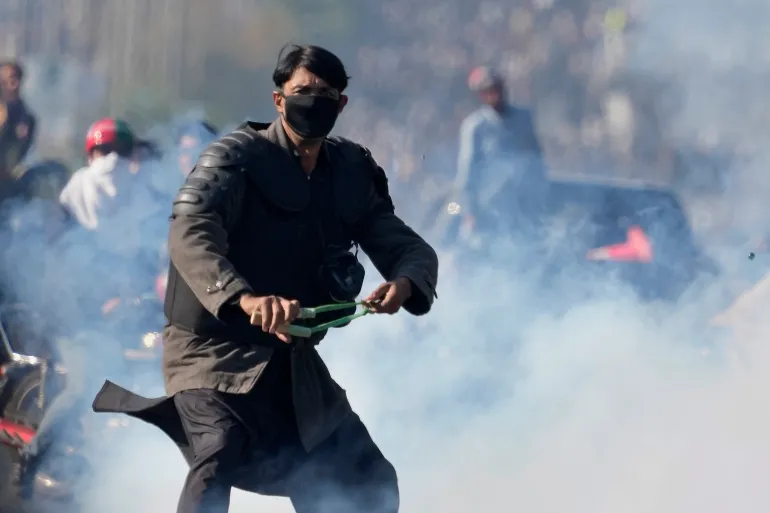Islamabad witnessed unprecedented protests as thousands of supporters of former Prime Minister Imran Khan defied roadblocks and tear gas to march toward the capital. The city remains under strict lockdown since late Saturday, with over 20,000 police personnel deployed to manage escalating tensions.

Key Highlights:
- Clashes between PTI supporters and security forces have left at least four Rangers and two policemen dead, alongside dozens of injuries.
- Protesters aim to gather at D-Chowk, a strategic location near Islamabad’s government buildings.
- Interior Minister Mohsin Naqvi vowed a firm response to demonstrators entering the red zone, deploying water cannons and riot gear.
- Mobile internet services have been intermittently suspended, and a two-month ban on public gatherings has been enforced.
Government Response
Interior Minister Mohsin Naqvi condemned attacks on security forces, paying tribute to the martyrs while promising justice against what he described as “miscreants.” Prime Minister Shehbaz Sharif also criticized the protests, labeling them a threat to national stability and asserting that such demonstrations were not peaceful but extremist in nature.
Protesters’ Demands
- Immediate release of PTI leader Imran Khan, who has been imprisoned for over a year on corruption and other charges.
- Resignation of the current government amid allegations of election rigging.
- Restoration of fair democratic practices in Pakistan.
Implications for Pakistan
As Islamabad remains paralyzed, the protests signify a deeper political crisis. The opposition’s claims of rigged elections and Khan’s exclusion from February’s polls have further polarized the nation. While PTI supporters vow to persist, the government faces mounting pressure to maintain law and order.
With both sides at a stalemate, Islamabad stands at the crossroads of significant political instability. The coming days will determine whether the government can quell the unrest or if the protests will escalate further.

